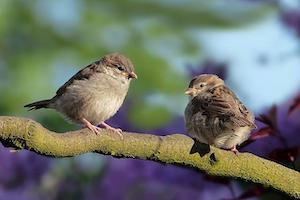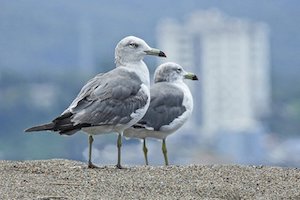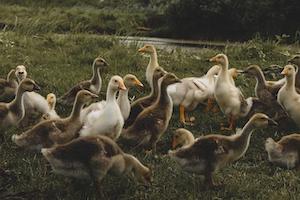by Mary Hrovat
 Twitter is toxic, suggests autocomplete; Twitter is an echo chamber, or at best a waste of time. Twitter is a hotbed of political factionalism. Twitter can be a frightening place for people who are harassed or threatened, and it may become more so when a recently announced takeover is complete. The bullying and misinformation and political threat are all real, and they’ve been central to recent discussions about the takeover. But Twitter is a big place, and some of us are there mainly for things we love. Birds, for example, and poems.
Twitter is toxic, suggests autocomplete; Twitter is an echo chamber, or at best a waste of time. Twitter is a hotbed of political factionalism. Twitter can be a frightening place for people who are harassed or threatened, and it may become more so when a recently announced takeover is complete. The bullying and misinformation and political threat are all real, and they’ve been central to recent discussions about the takeover. But Twitter is a big place, and some of us are there mainly for things we love. Birds, for example, and poems.
I joined Twitter mainly because I wanted to meet other writers and promote my writing. I thought it might allow me to network in a relatively painless way, by asynchronous remote contact, the perfect method for an introvert. I followed other writers and also editors that I thought I might want to pitch or submit my work to someday. I also thought of Twitter as a way to keep up with what’s going on in the world, opinion as well as hard news, so I followed political news outlets and various pundits. I followed news sources on topics I wrote about. I followed with an eye to utility.
Or mainly with an eye to utility. I didn’t always like the timeline I had built, so I started to follow various funny or quirky accounts as I ran across them. For example, I followed an account that posts old drawings of fruit, an oddly compelling bot called gradients, and one that posts AI-generated paint names (sometimes it tries too hard—Free Cheerful Pink Claret, for example—and other times it does not try hard enough—e.g., Warm Crap).
At some point I started to unfollow pundits and news sources, mainly because I realized that I was exposed to sufficient punditry and news without seeking them out. A bit later I refocused my writing-oriented follows more on witty wordsmiths and essayists and poets rather than on people I thought of mainly as potential contacts. At the beginning of the COVID era, I followed some epidemiologists and virologists, but I soon became overwhelmed and unfollowed most of them. Since mid-2020, my Twitter timeline has become increasingly focused on things I love, laugh at, or truly care about (as opposed to things I think I should care about).
###
It’s not surprising that I started my time on Twitter going after something that wasn’t quite what I wanted. With social media, it’s tempting to ask Which platform? and Who to follow? rather than Why?
The very first online social spaces in my life seemed like fairly straightforward extensions of physical social spaces. They included a homegrown VAX forum that was widely loved at Indiana University until it was shut down when VAX went the way of the mood ring. Its limited scope and local nature probably helped make it seem fairly connected to real life; it was very easy to meet people from the forum in the real world.
And there were Usenet newsgroups, which I still miss. They had an ugly side, but I found a small niche for myself, mainly in a couple of groups on astronomy. And there was no algorithm. Everything was threaded, and every time you logged in, you could see immediately what part of a conversation you had seen and what was new. Of course, those communities are long gone. Now that I think about it, it’s not just Usenet I miss. I also miss not being online all the time. I used to connect for a particular reason, even if I did sometimes get lost in Usenet threads once I was online.
Today’s platforms seem less like an extension of real social life. As they’ve tried to capture (and monetize) more and more human interactions, they’ve turned into something a bit weird. Too much is happening in a single space. On Facebook, for example, I’m talking to co-workers, family, friends, and sometimes strangers all in the same space, something I don’t do in real life. This is not necessarily bad, but it frustrates our tendency to show slightly different faces and adopt different registers depending on who we’re interacting with.
Still, Facebook once seemed like a pretty good place to keep in touch, especially with people who were no longer part of my day-to-day life. These days, I’m not so sure. A fair number of my friends have left or rarely post, and the algorithm makes it hard to see the people who are there or to be sure they see me. I think that the hit-or-miss contact might be reducing the number of amusing or interesting long comment threads, and those were always among my favorite things on Facebook. I cherish the friends who remain, but the algorithm stands between us even as the platform brings us together.
###
 I started changing my Twitter timeline by following a lot of people who like birds (also birbs and borbs), especially bird photographers. They led me to nature photographers in general and landscape photographers. In addition to birds, my timeline brings me snakes and lizards, bees and beetles, wildflowers and rivers and mountains. I dabble in the shallow end of photography Twitter and art Twitter. I follow people who take photos of old churches or abandoned buildings and ruins. The latter group fed my interest in urban design, history, and architecture, and I began to follow more people who write about city planning or post photos of old buildings or old things in general.
I started changing my Twitter timeline by following a lot of people who like birds (also birbs and borbs), especially bird photographers. They led me to nature photographers in general and landscape photographers. In addition to birds, my timeline brings me snakes and lizards, bees and beetles, wildflowers and rivers and mountains. I dabble in the shallow end of photography Twitter and art Twitter. I follow people who take photos of old churches or abandoned buildings and ruins. The latter group fed my interest in urban design, history, and architecture, and I began to follow more people who write about city planning or post photos of old buildings or old things in general.
This process of growth happened in a way that felt more or less like the way connections are formed in the offline world; I follow a lot of people that my current follows have retweeted. I generally ignore the “Who to follow” feature on Twitter’s web site. (In fact, the web site is often annoying, and I like my desktop client better.)
I also started to follow lots more writers, especially poets, and poetry lovers. I even found people who post poems accompanied by paintings or photographs. My life feels so much richer for the many poems and poets I’ve encountered. I never knew there were any female Beat poets, for example, until I read about Diane di Prima on Twitter. I learn about where other essayists and poets are published, and I do this in the context of people sharing their work or their friends’ work. It doesn’t feel like a hunt for markets; it’s about finding writing I like and wondering if my work might find a home in the same place.
###
 It’s hard for me to articulate exactly what I was seeking as I slowly built up my current timeline. What I have found is essentially a group of interesting, often funny people who post about something they love or are fascinated by and whose interests overlap my own affinities. My Twitter timeline (by and large, often enough) inspires me and shows me the world as an interesting place to explore. It counters my view of the world as a sad scary place (which it also is).
It’s hard for me to articulate exactly what I was seeking as I slowly built up my current timeline. What I have found is essentially a group of interesting, often funny people who post about something they love or are fascinated by and whose interests overlap my own affinities. My Twitter timeline (by and large, often enough) inspires me and shows me the world as an interesting place to explore. It counters my view of the world as a sad scary place (which it also is).
Essentially, I realized at some point that I don’t want to build a curated feed for myself on an app like Flipboard, where I can find articles on topics of my choice; I want to see what a group of congenial people is engaged by at the moment. I don’t so much want to find articles with advice on writing or publishing, for example; what I really like is following a bunch of writers and reading what they think about their writing process and their lives in general.
Through Twitter, I’ve found a large group of people who broaden my world by recommending books, music, artists, and performers and sharing things I wouldn’t have known about otherwise. For many years I thought I’d find my tribe, a group of people with similar sensibilities—maybe in college, maybe at a job or in an organized group of some kind. And to some extent, sometimes, I have. But this group is spread out in space and time; I know many fellow members only through the pages of books. I’m a little surprised to realize this, but I’ve found some of my tribe on Twitter.
Although I don’t know anyone that I met on Twitter deeply or well, I’ve learned a fair amount about people’s lives. I see photos of their meals and their newborns, their dogs and cats, their new book that was just published, the daffodils and roses in their gardens and things their kids drew. I read about people trying to build a new life after a divorce or a death, and their struggles to care for aging parents. My timeline has been filled with COVID stories, and this winter two women writers I follow were diagnosed with cancer. (Sometimes all you can do is say something kind.)
I follow local people on Twitter, and I value these connections; many of them would have been difficult or impossible to make offline. However, most of the people I follow are in different cities or countries. We’re connected not through physical proximity but by the platform itself. It resembles the type of community where you run into people in shared spaces in the context of your daily life. Offline, this includes public places, public transit, workplaces or apartment buildings or dorms. You see these people here or there, nod and smile, sometimes strike up a conversation.
Even before the pandemic, it felt like this kind of community was increasingly difficult to find. I remember—and miss—the times in my life when I didn’t have to do much to find company beyond leaving my own space. Twitter doesn’t perfectly replicate the experience of stepping into a world of people connected by place, but it sometimes gives a surprisingly good approximation.
###
Do I sometimes spend too much time scrolling through photos? Of course. In addition, I too often turn to Twitter mindlessly, as an escape from rather than a turning toward. And I can never build a timeline that would shield me entirely from the ugliness of life; I wouldn’t want to if I could.
It’s also true that online communities can’t take the place of in-person communities. Still—I remember how much I sympathized with a character in a novel, a young artist in 15th century Holland, who was thrilled when another artist moved to town; the town had never, in his lifetime, held two such enthusiasts before, and they had so much to say to each other. There are other poets in my town, and birders, and nature photographers. I don’t know if they constitute a community, or even multiple separate communities, and it was hard for me to meet them even before the pandemic. A local community, it seems to me, would be largely event-based; I don’t know if it could support the kind of drop-in flow that’s available on Twitter, or cover as broad a range of ages and interests and backgrounds. And the price of entry, for an introvert, is so much lower online.
I’m sure there are many other sub-Twitters based loosely on a shared topic of interest. I’m glad I’ve found poetry Twitter and bird Twitter and have a toehold in several other subgroups. I’m lucky to be a very small frog in a global pond; I haven’t been a target for harassment, but I know the danger is real for many others. I’d like to think there’s a way to have online communities that are not subject to ruination by the loudest and meanest. Despite my concern about what the future will bring for Twitter, I value what I’ve found there. I need these communities.
###
The novel I mentioned is The Cloister and the Hearth, by Charles Reade. If Victorian historical novels are to your taste, I highly recommend it.
Image of sparrows by Oldiefan from Pixabay
Image of seagulls by Johnnys_pic from Pixabay
Image of waterfowl by Olga Krikliva from Pixabay
You can see more of my work at MaryHrovat.com. Or you can find me on Twitter.
